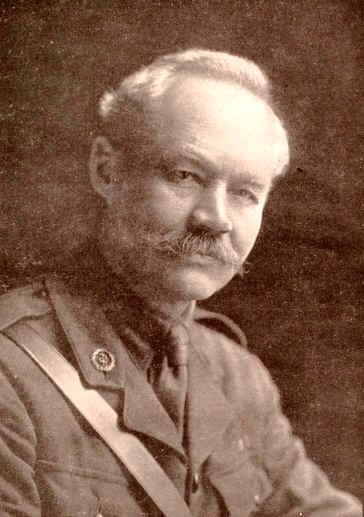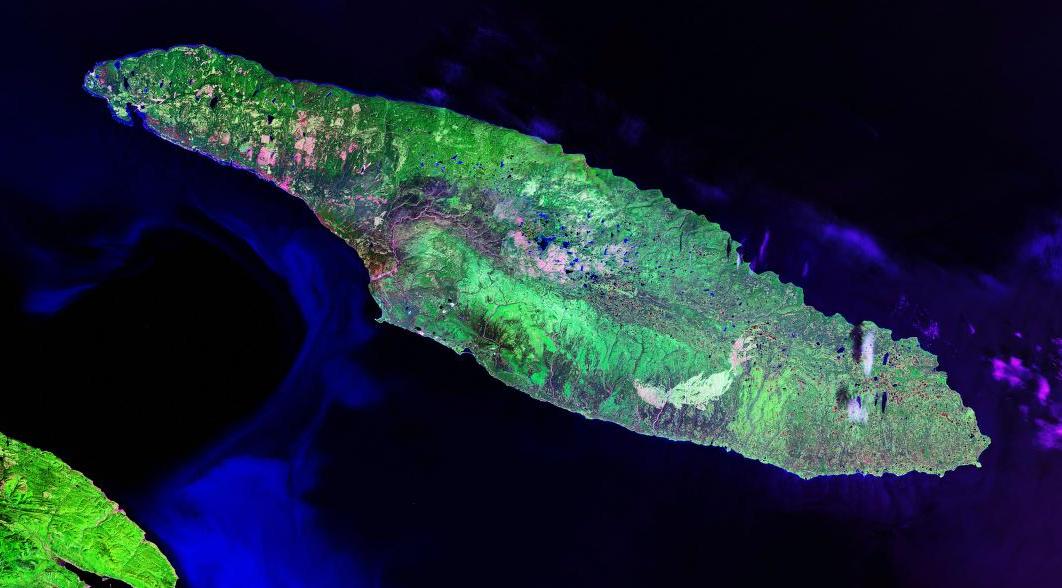|
Resettlement (Newfoundland)
Resettlement in Newfoundland and Labrador terms refers to an organized approach to centralize the population into growth areas. It is used in the current context when referring to a voluntary relocation initiated from isolated communities themselves. Three attempts of resettlement were initiated by the Government between 1954 and 1975 which resulted in the abandonment of 300 communities and nearly 30,000 people moved.''Encyclopedia of Newfoundland and Labrador'', Volume four, p. 585, . Government's attempt of resettlement has been viewed as one of the most controversial government programs of the post-Confederation Newfoundland and Labrador. In the 21st century, the Community Relocation Policy allows for voluntary relocation of isolated settlements. From 2002 to 2020, nine communities relocated. Background The history and commerce of Newfoundland and Labrador was built on the fishery and thus many small communities were established throughout the entire coastal region. Some of the ... [...More Info...] [...Related Items...] OR: [Wikipedia] [Google] [Baidu] |
CFB Goose Bay
Canadian Forces Base Goose Bay , commonly referred to as CFB Goose Bay, is a Canadian Forces Base located in the municipality of Happy Valley-Goose Bay in the province of Newfoundland and Labrador. It is operated as an air force base by the Royal Canadian Air Force (RCAF). Its primary RCAF lodger unit is 5 Wing, commonly referred to as 5 Wing Goose Bay. The airfield at CFB Goose Bay is also used by civilian aircraft, with civilian operations at the base referring to the facility as Goose Bay Airport. The airport is classified as an airport of entry by Nav Canada and is staffed by the Canada Border Services Agency (CBSA). CBSA officers at this airport can handle general aviation aircraft only, with no more than 15 passengers. The mission of 5 Wing is to support the defence of North American airspace, as well as to support the RCAF and allied air forces in training. Two units compose 5 Wing: 444 Combat Support Squadron (flying the CH-146 Griffon) and 5 Wing Air Reserve Fli ... [...More Info...] [...Related Items...] OR: [Wikipedia] [Google] [Baidu] |
Great Northern Peninsula
The Great Northern Peninsula (Inuttitut: ''Ikkarumiklua'') is the largest and longest peninsula of Newfoundland, Canada, approximately 270 km long and 90 km wide at its widest point and encompassing an area of 17,483 km2. It is defined as that part of Newfoundland from Bonne Bay northwards around Cape Norman and Cape Bauld and thence southwards to the head of White Bay, bounded by the Gulf of St. Lawrence on the west, the Strait of Belle Isle on the north and the Labrador Sea and White Bay on the east. The vast majority of the peninsula is located within Division No. 9, Newfoundland and Labrador, except for the southeastern corner, which is part of Subdivision G of Division No. 5, Newfoundland and Labrador. In 1991, the peninsula had 23,854 inhabitants. By 2016, however, the population had decreased to 15,607, further decreased to 14,733 in 2021. St. Anthony is the largest population centre on the peninsula. A ferry service operates at the western part of the ... [...More Info...] [...Related Items...] OR: [Wikipedia] [Google] [Baidu] |
Wilfred Grenfell
Sir Wilfred Thomason Grenfell (28 February 1865 – 9 October 1940) was a British medical missionary to Newfoundland, who wrote books on his work and other topics. Early life and education He was born at Parkgate, Cheshire, England, on 28 February 1865, the Son of Rev. Algernon Sidney Grenfell, headmaster of Mostyn House School, and Jane Georgiana Hutchison. Grenfell moved to London in 1882. He then commenced the study of medicine at the London Hospital Medical College (now part of Barts and The London School of Medicine and Dentistry) under the tutelage of Sir Frederick Treves. He graduated in 1888. Career The Royal National Mission to Deep Sea Fishermen sent Grenfell to Newfoundland in 1892 to improve the plight of coastal inhabitants and fishermen. That mission began in earnest in 1892 when he recruited two nurses and two doctors for hospitals at Indian Harbour, Labrador and later opened cottage hospitals along the coast of Labrador. The mission expanded greatly from its i ... [...More Info...] [...Related Items...] OR: [Wikipedia] [Google] [Baidu] |
Nain, Newfoundland And Labrador
Nain (Inuit language: ''Nunainguk'') is the northernmost permanent settlement in the Canadian province of Newfoundland and Labrador, within the Nunatsiavut region, located about by air from Happy Valley-Goose Bay. The town was established as a Moravian mission in 1771 by Jens Haven and other missionaries. As of 2021, the population is 1,204 mostly Inuit and mixed Inuit-European. Nain is the administrative capital of the autonomous region of Nunatsiavut. Nain is inaccessible by road and may be reached only by air or sea. History Nain was first established in 1771 by Moravian missionaries. It is among the oldest permanent Inuit settlements in Canada, most communities in Nunavut and Nunavik were settled in the 1950s or later. It is also the oldest continuously-inhabited community in Labrador after North West River. Nain has also been called "Nonynuke", "Nuninock" and "Nunaingoakh". The missionaries also established posts in Hopedale and areas in the north such as Hebron and ... [...More Info...] [...Related Items...] OR: [Wikipedia] [Google] [Baidu] |
Hebron, Newfoundland And Labrador
Hebron was a Moravian mission and the northernmost settlement in Labrador. Founded in 1831, the mission disbanded in 1959. The Inuk Abraham Ulrikab and his family, exhibited in ''human zoos'' in Europe in 1880, were from Hebron. Climate The site has an unusual sub-type of arctic (tundra) climate, characterized by relatively high average annual precipitation with half the precipitation occurring during the six coldest months (51% of the total falling from October through March). January, for example, averages -21 °C (-6 °F) and has of water-equivalent precipitation on average, perhaps the most humid air at that temperature experienced anywhere on earth. History Moravians began establishing missions in Labrador in 1771. The first was located at Nain. The Moravians sought to evangelize the Inuit in Labrador. In 1831, the Moravian church established a mission at Hebron, a site located about north of Nain. Life was hard at the settlement. Epidemics of whooping c ... [...More Info...] [...Related Items...] OR: [Wikipedia] [Google] [Baidu] |
Inuit
Inuit (; iu, ᐃᓄᐃᑦ 'the people', singular: Inuk, , dual: Inuuk, ) are a group of culturally similar indigenous peoples inhabiting the Arctic and subarctic regions of Greenland, Labrador, Quebec, Nunavut, the Northwest Territories, and Alaska. Inuit languages are part of the Eskimo–Aleut languages, also known as Inuit-Yupik-Unangan, and also as Eskaleut. Inuit Sign Language is a critically endangered language isolate used in Nunavut. Inuit live throughout most of Northern Canada in the territory of Nunavut, Nunavik in the northern third of Quebec, Nunatsiavut and NunatuKavut in Labrador, and in various parts of the Northwest Territories, particularly around the Arctic Ocean, in the Inuvialuit Settlement Region. With the exception of NunatuKavut, these areas are known, primarily by Inuit Tapiriit Kanatami, as Inuit Nunangat. In Canada, sections 25 and 35 of the Constitution Act of 1982 classify Inuit as a distinctive group of Aboriginal Canadians wh ... [...More Info...] [...Related Items...] OR: [Wikipedia] [Google] [Baidu] |
Moravian Church
The Moravian Church ( cs, Moravská církev), or the Moravian Brethren, formally the (Latin: "Unity of the Brethren"), is one of the oldest Protestantism, Protestant Christian denomination, denominations in Christianity, dating back to the Bohemian Reformation of the 15th century and the History of the Moravian Church, Unity of the Brethren ( cs, Jednota bratrská, links=no) founded in the Kingdom of Bohemia, sixty years before Reformation, Luther's Reformation. The church's heritage can be traced to 1457 in Bohemian Crown territory, including its Lands of the Bohemian Crown, crown lands of Moravia and Silesia, which saw the emergence of the Hussite movement against several practices and doctrines of the Catholic Church. However, its name is derived from exiles who fled from Bohemia to Saxony in 1722 to escape the Counter-Reformation, establishing the Christian community of Herrnhut; hence it is also known in German language, German as the ("Unity of Brethren [of Herrnhut]"). T ... [...More Info...] [...Related Items...] OR: [Wikipedia] [Google] [Baidu] |
The Canadian Encyclopedia
''The Canadian Encyclopedia'' (TCE; french: L'Encyclopédie canadienne) is the national encyclopedia of Canada, published online by the Toronto-based historical organization Historica Canada, with the support of Canadian Heritage. Available for free online in both English and French, ''The Canadian Encyclopedia'' includes more than 19,500 articles in both languages on numerous subjects including history, popular culture, events, people, places, politics, arts, First Nations, sports and science. The website also provides access to the ''Encyclopedia of Music in Canada'', the ''Canadian Encyclopedia Junior Edition'', ''Maclean's'' magazine articles, and ''Timelines of Canadian History''. , over 700,000 volumes of the print version of ''TCE'' have been sold and over 6 million people visit ''TCE'''s website yearly. History Background While attempts had been made to compile encyclopedic material on aspects of Canada, ''Canada: An Encyclopaedia of the Country'' (1898–1900), ... [...More Info...] [...Related Items...] OR: [Wikipedia] [Google] [Baidu] |
Anticosti Island
; moe, Notiskuan; mic, Natigostec , sobriquet = , image_name = RiviereHuileAnticosti.jpg , image_caption = Salmon fisherman on Rivière à l'Huile , image_map = , map_alt = , map_size = , map_caption = , pushpin_map = Canada Quebec , pushpin_label = , pushpin_label_position = , pushpin_map_alt = , pushpin_relief = , pushpin_map_caption = , coordinates = , etymology = , location = Gulf of Saint Lawrence , grid_reference = , archipelago = , waterbody = , total_islands = , major_islands = , area_km2 = 7,953 ... [...More Info...] [...Related Items...] OR: [Wikipedia] [Google] [Baidu] |
Garia, Newfoundland And Labrador
Garia was a small town located in Garia Bay on the south coast of Newfoundland and Labrador. The origin of the town's name is probably from the French word 'gare'. The first record of the existence of this community was in 1765 when James Cook recorded one fishing stage in the area. The first record of permanent inhabitants was in the 1836 census when 12 inhabitants were living in the town. The population peaked in 1869 at 195. In 1873 approximately three-quarters of the population left for work on Anticosti Island, leaving only 55 inhabitants by 1874. The population continued to decline until the community was abandoned sometime after 1911. See also * List of communities in Newfoundland and Labrador *List of ghost towns in Newfoundland and Labrador A ''list'' is any set of items in a row. List or lists may also refer to: People * List (surname) Organizations * List College, an undergraduate division of the Jewish Theological Seminary of America * SC Germania List ... [...More Info...] [...Related Items...] OR: [Wikipedia] [Google] [Baidu] |
Newfoundland Outport
An outport is the term given for a small coastal community in the Canadian province of Newfoundland and Labrador other than the chief port of St. John's. Originally, the term was used for coastal communities on the island of Newfoundland, but the term has now been adopted for those on the mainland area of Labrador as well. History Outports are some of the oldest European settlements in Canada. Giovanni Caboto (known by his English sponsors as John Cabot) visited Newfoundland or Cape Breton Island in 1497; and news spread quickly that Cabot had caught cod by simply lowering and lifting a weighted basket. Gaspar Corte-Real of Portugal visited Newfoundland in 1500, and by 1506 the catch from the Grand Banks of Newfoundland encouraged the King of Portugal to impose a ten percent import tariff to protect local fishermen. The first recorded French fishing boat on the Grand Banks was in 1504, Basque whalers arrived in 1527, and Spanish fishermen followed by 1540. A lot of fishin ... [...More Info...] [...Related Items...] OR: [Wikipedia] [Google] [Baidu] |




